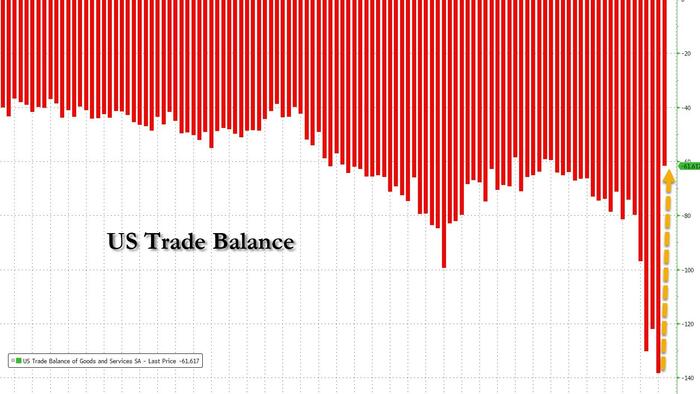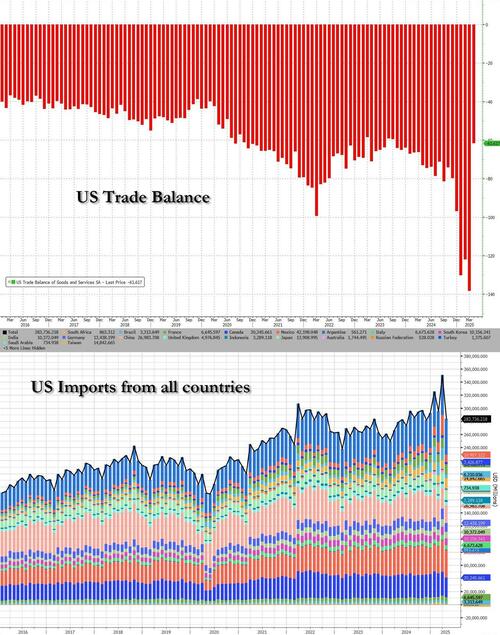


By Elwin de Groot, head of macro strategy at Rabobank
Bond yields were up some 5 basis points globally whilst the euro made a slight reversal after having pushed for a near high of 1.15 as the ECB concluded its press conference. From a ‘low’ inspired by 50% tariffs on US steel and aluminium imports going ‘live’ earlier this week and growing concerns about the US economy and the labor market, sentiment in financial markets briefly swung back to a ‘high’ as President Donald Trump said he had a “very good phone call” with Chinese President Xi Jinping. Gains in equity markets were modest but still good enough for S&P500 to extend its rally to 20% from its 8 April low. That is, before the falling-out between Trump and Musk reached a boiling point on social media. Enough is being written about that right now, so we’ll leave you at it.
After the call with Xi, Trump said that both leaders have agreed to further talks and that there “should no longer be any questions respectively the complexity of Rare Earth products”. That’s up for various interpretations, but it suggests China has offered to speed up its process of lifting its export restrictions. Still, the Chinese readout of the call, unsurprisingly, was more nuanced and said that Xi had urged Trump to remove “negative” measures that have affected trade between the countries in recent months. The upshot, from the market’s perspective is that both sides are, at least, talking and that holds the prospect of further progress in removing some (still very high) tariffs. But, just for balance, Commerce Secretary Lutnick yesterday called for increased enforcement of US export controls on technology, warning that China was “only attacking great American companies.” If President Xi was referring to those export controls with “negative measures”, the market’s positive assessment may be, well, too high.
That further talks with the US can lead to a ‘deal’ (as Keir Starmer can confirm), a stalemate (see EU-US) or a major escalation, as Zelensky can attest, is on any global leader’s mind. Nikkei Asia reports that US negotiators Bessent, Lutnick and Greer keep Japan guessing. “At one point the three cabinet officials put the talks with the Japanese side on hold an began debating right in front of them”, a source tells the Nikkei. In that sense, German Chancellor Merz came away nicely after a 40-minute meeting in the Oval Office, as he let Trump do most of the talking. Little concrete came from that meeting, though Trump acknowledged the ramp-up in German defense spending.
Trade data are going from lows to highs as well, which in some cases makes the Covid-episode data look pale. As the Commerce Department confirmed, the US trade deficit for April shrunk by the most on record, to $61.6bn from $138.3bn in March, driven by the largest-ever decline in imports.
Frontloading in the run-up the tariffs clearly was massive and then collapsed. This also suggests that after its big negative contribution to US GDP growth in Q1 it will be a significant positive factor in Q2. Inventory effects will likely attenuate some of its effect. Bloomberg noted that a drop in imports of pharmaceuticals from Ireland was responsible for an almost $20bn swing in the deficit. The opposite (statistical) effect is thus going to be seen in Europe in Q2. Ireland yesterday reported a significant upward revision in Q1 GDP (which now points to a revision in Eurozone GDP growth to around +0.6% q/q (!) from 0.3% previously). But this will obviously turn to a significant drag in Q2 as those US trade numbers for April just signaled.
Staying in Europe, the ECB seemingly presented itself as an anchor of stability in these times of highs and lows. Lagarde’s new mantra is now “well positioned”, which could be viewed in our opinion as code language for “we’re done cutting, unless…”. This becomes even clearer when you compare it to the previous mantra Lagarde introduced in March when she called ECB policy “meaningfully less restrictive”. We had expected little to no guidance from yesterday’s policy meeting, but these new words – despite lower oil prices and a stronger euro – lead us to maintain our view that we have reached the terminal rate.
However, the ECB leaves ample room to respond if things do not work out the way they envisage. Indeed, it lowered its inflation forecast significantly with core inflation positioned around 2% for the coming years. Moreover, its new scenario analyses unveiled a dovish reaction function to a potential escalation of trade tensions. Should this happen, and paused tariffs were to be reinstated, the ECB’s economists estimate that this could lower GDP growth through 2027 by about 1% cumulatively. And, interestingly, they conclude that inflation would be somewhat lower as well: in such a scenario inflation would average 1.8% in 2027, and that includes the assumption that the EU retaliates. By contrast, our own econometric analysis indicates that European tariffs on the US would be (mildly) inflationary instead.
Lagarde did say that their modelling exercise assumed that higher tariffs could lead to lower demand for euro area exports and to countries with overcapacity rerouting their exports to the euro area thereby putting more downward pressure on inflation. However, she acknowledged that the ECB’s analysis did not include any inflationary impact from a disruption of supply chains. Although this effect, admittedly, is surrounded by even more uncertainty, we did take this into account in our own scenario analysis (which explains why we still have inflation somewhat above the ECB’s target even in 2026). And one only need to take a quick glance at container freight rates (benchmark composite by WCI up by a staggering 175% compared to last month) to understand why be believe the ECB the ECB could be under-estimating the potential highs.
Time will tell, of course. But one thing that the ECB may be right about, is the (initial) downward pressure on imported goods prices due to a diversion of trade. The European Commission yesterday published its first assessment from its trade diversion monitoring tool that was launched in April. The early warning system tracks shipments and prices of goods at a high level of detail. In the short-run lower prices may benefit European importers and thereby consumers, but if those prices are the result of overcapacity in other parts of the world (such as China) this could also undermine European producers. The South China Morning Post reported that “in the month to May 25, imports of light-emitting diodes surged 156 per cent, while their price fell 65 per cent. Shipments of industrial robots shot up by 315 per cent, paired with a 35 per cent price decline. And imports of some bars and rods made from steel alloy soared by over 1,000 per cent as their price plunged 86 per cent.”
Whilst such figures can be extremely volatile due to their level of detail, seasonal patterns etc. and make no distinction between the origin of the content, a heatmap by the Commission shows that China was a significant contributor to these changes. The FT writes that the surge in steel imports, driven by trade diversion, is setting off alarm bells in the steel sector. Forecasting the next steps by the European Commission is a rather speculative affair, but we’d not be surprised if this leads to some form of action. This year the Commission has already launched more than 10 cases against China and/or Chinese producers (based on our count of news articles on the EU’s trade defense website).

